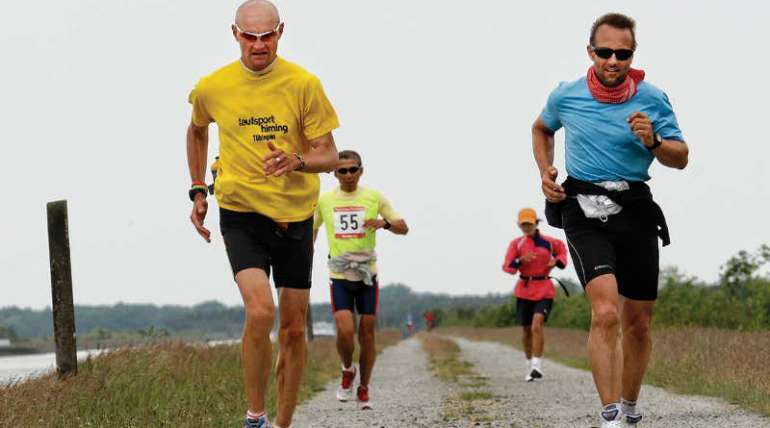The global athletic footwear market will reach $114 billion USD by 2022. The upward trend looks to continue with gyms currently closed and orga-nized sports on hold, as many more people have turned to running during this pandemic.
Running shoe companies for years have been trying to match the biome-chanics of the runner to the attributes of the shoe. They’ve addressed runners who pronate, supinate, have a high arch, a low arch, wide feet, skinny heals, you name it… They’ve focused on shoe stack height (the distance between foot and ground) and heel-to-toe drop (the difference in height of shoe under toes vs heel).
After the release of the world famous book “Born to Run” in 2005 which touted that we return to our roots and run more “naturally’, the barefoot running and minimalist shoe craze took off. Millions of runners began ditching traditional shoes for new barefoot inspired footwear. The big problem is that their bodies were not accustomed to running on hard sur-faces for long distances without much support. The theory was that min-imalist shoes would force us to consciously try and land more softly. It didn’t work. As expected injury rates began to increase. The science proved that if you run in a minimal shoe you simply hit the ground harder. The nervous system of most runners is accustomed to cushioned shoes so naturally, stress fractures, plantar fasciitis and soft tissue injures oc-curred in record numbers. And just like that, the minimal shoe craze fad-ed away. Today only .8% of the shoe market is minimalist shoes.
So we pivoted towards focusing on stack height, heel-to-toe drop and shoe flexibility. The good news is that the market is now flooded with so many choices – something for everyone. The bad news is that as it turns out, none of it makes a measurable difference in running mechanics. In fact, the recently popular zero drop shoes can actually cause achilles tendinitis. If you walk around in dress shoes all day, or really any shoe with a heel, the zero heel-to-toe drop for some, can actually overextend the achilles and lead to injury.
Today the pendulum has now swung so far the other way in favor of the maximalist “pillow shoe” trend. While the early science suggests that maximalist shoes don’t reduce injuries either, I talk to runners all the time who swear they feel better running since switching to Hokas or Altras. So that’s good.
Who knows what the next trend will be… The best advice I can offer is to pick a shoe you like, that’s comfortable and that feels like you don’t need to break it in. Focus more on running load, weekly mileage increases, and consider taking shorter strides with higher turnover if you feel like you’re over-extending and landing hard. We will address running me-chanics, the case against over-stretching and the importance strength training in future articles.


